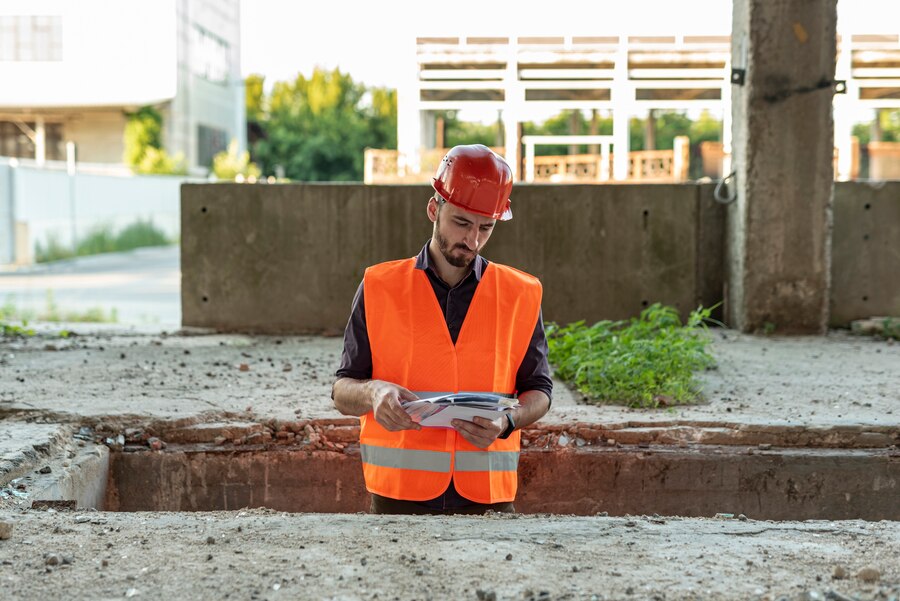Creating a durable and visually appealing patio or outdoor space involves a combination of selecting the right materials, designing for functionality and aesthetics, incorporating sustainable practices, and adding cozy elements for comfort.
In this guide, we will explore how to construct stunning outdoor areas that not only enhance the beauty of your home but also provide long-lasting enjoyment.
From choosing the best materials and design considerations to maintaining and protecting your space, this comprehensive guide will help you create an inviting and sustainable outdoor environment.

Choosing the Right Materials
- When it comes to constructing a durable and visually appealing patio or outdoor space, choosing the right materials is as crucial as having patio paving ideas.
- Selecting materials that are suitable for your climate and usage requirements will ensure the longevity and functionality of your outdoor area.
- One important factor to consider is the type of flooring material. Options such as natural stone, concrete patio design pavers, or composite decking offer different aesthetics and durability levels.
- Natural stone, like travertine or slate, can provide a timeless and elegant look, while concrete pavers offer versatility and durability.
- Composite decking, on the other hand, is a low-maintenance option that mimics the look of real wood without the need for regular staining or sealing.
- In addition to the flooring material, consider the materials for the patio furniture, structures, and accessories.
- Opt for weather-resistant materials like aluminum, teak, or outdoor-grade wicker for furniture, as they can withstand the elements and require minimal maintenance.
- For structures like pergolas or gazebos, choose materials like cedar or pressure-treated lumber that are resistant to rot and decay.
- By carefully selecting the right materials for your patio or outdoor space, you can ensure its durability and visual appeal for years to come.
Designing for Functionality and Aesthetics
- Creating a patio or outdoor space that is both functional and aesthetically pleasing requires careful design consideration.
- Start by determining the primary uses of the space and how it will be utilized. Will it be an area for dining and entertaining, a cozy retreat for relaxation, or a combination of both?
- Consider the layout and flow of the space to optimize its functionality.
- Divide the area into distinct zones for different activities, such as a seating area, dining area, and cooking area.
- Incorporate pathways or walkways to connect these zones and create a sense of cohesion.
- When it comes to aesthetics, choose a design style that complements the architecture and landscaping of your home.
- Whether you prefer a modern and minimalist look or a cozy and rustic vibe, select furniture, decor, and materials that align with your desired aesthetic.
- Add pops of color with cushions, rugs, and planters to create visual interest and make the space inviting.
- Balancing functionality and aesthetics in the design of your patio or outdoor space will result in a harmonious and welcoming environment that you can enjoy year-round.
Incorporating Sustainable Practices
- In today’s environmentally-conscious world, incorporating sustainable practices into the construction and maintenance of your outdoor space is not only beneficial for the planet but also for your wallet.
- By making eco-friendly choices, you can reduce your carbon footprint and save on energy and water costs.
- While you have patio paving ideas, one way to incorporate sustainability is by using permeable outdoor paving materials, such as permeable concrete patio design or porous pavers.
- These outdoor paving materials allow rainwater to infiltrate the ground, reducing stormwater runoff and replenishing groundwater.
- Additionally, consider installing a rainwater harvesting system to collect and reuse rainwater for irrigation purposes.
- Another sustainable practice is to choose native plants for your landscaping.
- Native plants are adapted to the local climate and require less water and maintenance compared to exotic or non-native species.
- They also provide habitat for local wildlife and contribute to biodiversity.
- Lastly, opt for energy-efficient outdoor lighting fixtures and appliances.
- LED lights are a popular choice as they consume less energy and have a longer lifespan compared to traditional incandescent bulbs.
- Consider installing motion sensors or timers to further reduce energy consumption.
- By incorporating sustainable practices into your outdoor space, you can create an eco-friendly and environmentally responsible area that enhances the beauty of your home.

Adding Cozy Elements for Comfort
- To make your outdoor space truly inviting and comfortable, consider adding cozy elements that enhance the ambiance and provide a sense of relaxation.
- One way to achieve coziness is by incorporating comfortable seating options. Choose weather-resistant cushions and pillows in soft fabrics that invite you to sit and unwind. Add throw blankets or outdoor rugs to create a cozy and warm atmosphere.
- Another element to consider is shade. Install a pergola, awning, or umbrella to provide shelter from the sun’s rays and create a comfortable and shaded area. You can also incorporate natural shade elements like trees or tall shrubs.
- Fire features are another great addition to create a cozy atmosphere.
- Whether it’s a fire pit, a fireplace, or a portable heater, these features provide warmth and a focal point for gathering with friends and family.
- Don’t forget to check local regulations and safety guidelines when installing fire features.
- Lastly, add personal touches and decor that reflect your style and personality.
- Hang string lights or lanterns for a magical ambiance, place potted plants or flowers for a touch of nature, and include outdoor artwork or sculptures to add visual interest.
- By adding these cozy elements to your outdoor space, you can create a welcoming and comfortable environment that encourages relaxation and enjoyment.
Maintaining and Protecting Your Outdoor Space
- Once you have constructed your durable and visually appealing patio or outdoor space, it’s important to maintain and protect it to ensure its longevity and beauty.
- Regular maintenance tasks include sweeping or blowing away debris, cleaning the flooring material, and inspecting furniture and structures for any signs of damage or wear.
- Follow the manufacturer’s instructions for cleaning and maintenance to avoid causing any damage to the materials.
- Protecting your outdoor space from the elements is crucial. Consider investing in covers or storage solutions for furniture and accessories during the off-season or when not in use.
- Apply sealant or protective coatings to the flooring material to prevent staining or fading. Trim trees or shrubs to prevent damage from falling branches or excessive shade.
- Additionally, be mindful of any specific maintenance requirements for the materials used in your outdoor space.
- For example, natural stone may require periodic sealing, while composite decking may benefit from regular cleaning to remove dirt and debris.
- By staying proactive with maintenance and protection, you can extend the lifespan of your outdoor space and keep it looking beautiful for years to come.
FAQs
What are the best materials for a durable patio?
The best materials for a durable patio include natural stone (such as travertine or slate), concrete pavers, and composite decking.
These materials offer varying levels of durability and aesthetics. Natural stone provides a timeless look, concrete pavers are versatile and durable, and composite decking requires low maintenance while mimicking the appearance of real wood.
How can I make my outdoor space more eco-friendly?
To make your outdoor space more eco-friendly, consider using permeable paving materials, installing a rainwater harvesting system, and choosing native plants for landscaping.
Additionally, use energy-efficient outdoor lighting, such as LED lights, and install motion sensors or timers to reduce energy consumption.
What are some tips for maintaining my patio and outdoor furniture?
Regular maintenance tasks include sweeping or blowing away debris, cleaning the flooring material, and inspecting furniture and structures for signs of damage or wear.
Protect your outdoor space by using covers or storage solutions for furniture when not in use, applying sealant or protective coatings to flooring, and trimming trees or shrubs to prevent damage.
Following the manufacturer’s instructions for cleaning and maintenance is essential to avoid causing any damage to the materials.
